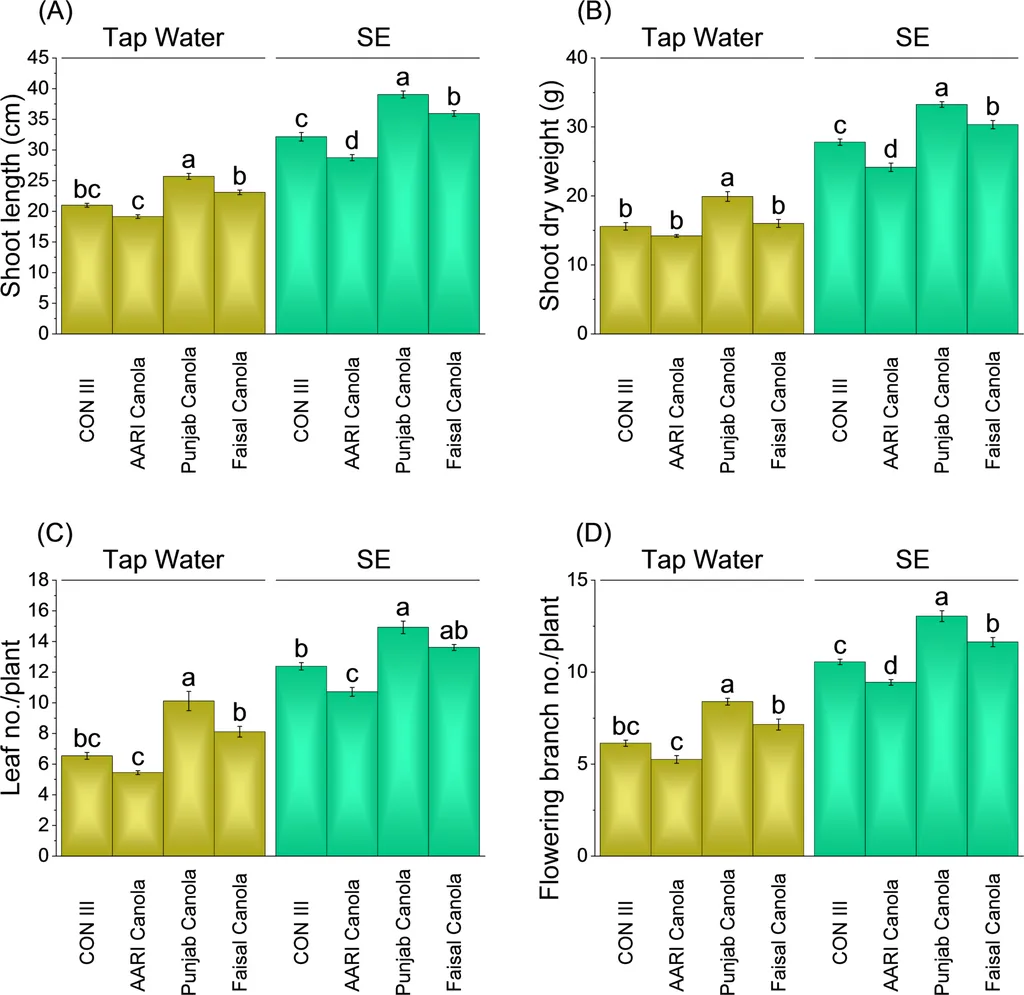In a groundbreaking study published in *Scientific Reports*, researchers have uncovered a promising solution to the dual challenges of water scarcity and sustainable agriculture. The research, led by Hafeez Ullah of the Institute of Botany at Bahauddin Zakariya University, explores the potential of diluted sewage effluent (SE) as an alternative irrigation source for canola cultivation. This innovative approach not only addresses the pressing issue of water scarcity but also leverages the nutrient-rich properties of SE to enhance crop productivity.
The study focused on four canola varieties—CON III, AARI Canola, Punjab Canola, and Faisal Canola—and evaluated their growth and biochemical attributes under controlled conditions. The results were striking. Punjab Canola, in particular, showed remarkable improvements when irrigated with diluted SE. Shoot length increased by 51.99%, shoot dry weight by 66.96%, and the number of flowering branches per plant by 55.34%. Additionally, seed oil content saw a significant boost of 9.87%. These findings highlight the potential of SE to revolutionize agricultural practices, especially in regions where freshwater is scarce.
“Our research demonstrates that diluted sewage effluent can be a game-changer for the agriculture sector,” said Hafeez Ullah. “By optimizing the dilution levels, we can mitigate the risks associated with contaminants while harnessing the nutrient benefits of SE to enhance crop growth and productivity.”
The study also revealed that photosynthetic pigments, including chlorophyll a and b, were markedly enhanced in Punjab Canola under SE treatment. This suggests that SE can improve the overall health and vigor of plants, leading to better yields and quality. The improved concentrations of nitrogen, phosphorus, and potassium in both roots and shoots further underscore the effectiveness of SE in promoting nutrient uptake.
The commercial implications of this research are substantial. As water scarcity continues to threaten global food security, farmers are increasingly looking for sustainable and cost-effective irrigation solutions. Diluted SE offers a viable alternative that not only conserves freshwater resources but also enhances soil fertility and crop productivity. This could lead to significant economic benefits for the agriculture sector, particularly in regions where water availability is a major constraint.
Moreover, the study’s findings open up new avenues for research and development in the field of sustainable agriculture. Future studies could explore the optimal dilution ratios for different crop varieties and soil types, as well as the long-term effects of SE irrigation on soil health and environmental safety. Additionally, the integration of advanced filtration and biological treatment technologies could further enhance the safety and efficacy of SE as an irrigation source.
In conclusion, this research represents a significant step forward in the quest for sustainable agriculture. By leveraging the nutrient-rich properties of sewage effluent, farmers can not only address water scarcity but also improve crop yields and quality. As Hafeez Ullah noted, “This is just the beginning. The potential for SE in agriculture is vast, and with further research, we can unlock even greater benefits for farmers and the environment alike.”

